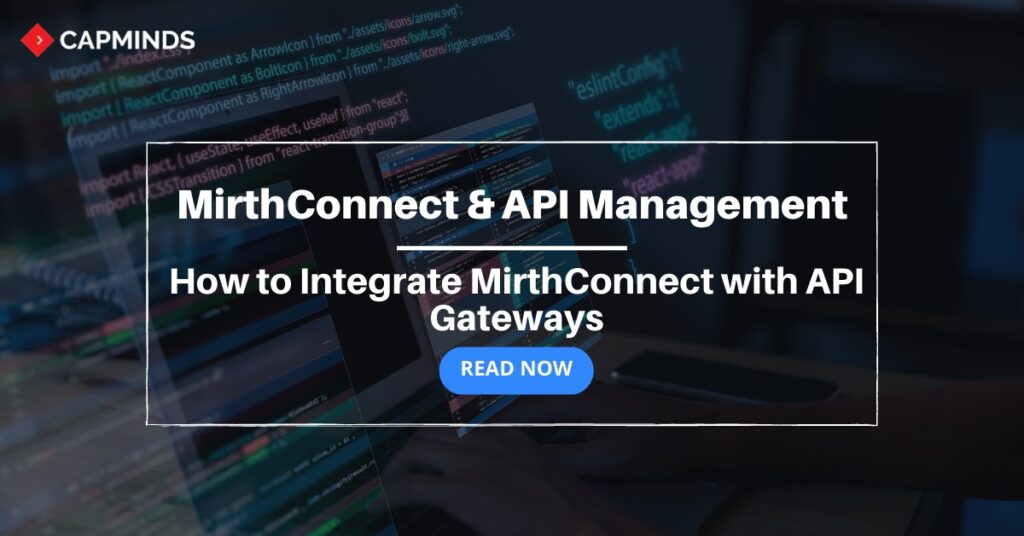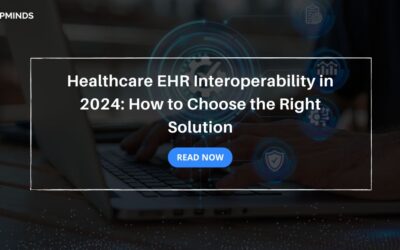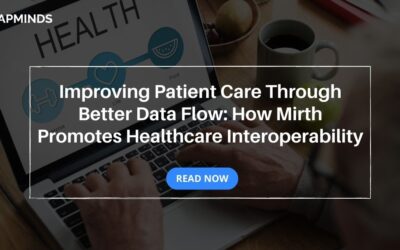Mirth Connect & API Management: How to Integrate MirthConnect with API Gateways
In today’s digital age, healthcare organizations are collecting and generating vast amounts of data that can be used to improve patient care & drive better outcomes.
One of the key challenges facing healthcare organizations is integrating and managing disparate systems and data sources. This is where MirthConnect and API management comes in.
RELATED: Mirth Connect: The Trending HL7 Interface Engine [features & benefits]
What is Mirth Connect?
- MirthConnect is an open-source healthcare integration engine
- It enables healthcare organizations to connect disparate systems and data sources, like EHRs, medical devices, and healthcare applications
- MirthConnect provides a flexible and scalable platform for healthcare organizations to manage their data and integrate their systems
RELATED: 6 Steps to Integrate Mirth Connect with Salesforce Health Cloud
What is API Management?
- API management, on the other hand, is the process of creating, publishing, and managing APIs (Application Programming Interfaces)
- APIs allow different software applications to communicate with each other and exchange data in a standardized and secure way
- API management helps organizations to manage their APIs and ensure their security, reliability, and scalability
Integration of Mirth Connect and API Gateways
Integrating MirthConnect with API gateways can provide a powerful solution for healthcare organizations to manage their data and systems. In this article, we will explore the benefits of integrating MirthConnect with API gateways and provide a step-by-step guide on how to do it.
Benefits of Integrating MirthConnect with API Gateways
Integrating MirthConnect with API gateways can provide healthcare organizations with a range of benefits, including:
1. Simplified Integration
- API gateways provide a single entry point for healthcare systems to integrate with MirthConnect
- This simplifies the integration process and reduces the time and resources required to manage multiple integrations
2. Improved Security
- API gateways provide a secure and standardized way for healthcare systems to access MirthConnect
- This reduces the risk of unauthorized access and ensures that data is transmitted securely
3. Better Performance
- API gateways can improve the performance of MirthConnect by reducing the load on the integration engine
- This is achieved by caching data and using intelligent routing to distribute requests to the appropriate systems
4. Scalability
- API gateways can help healthcare organizations to scale their systems and data sources by providing a flexible and scalable platform for managing their APIs
5. Analytics
- API gateways can provide healthcare organizations with insights into how their APIs are being used
- This can help organizations to optimize their systems and improve patient care
Now that we have explored the benefits of integrating MirthConnect with API gateways, let’s take a look at how to do it.
Step-by-Step Guide to Integrating MirthConnect with API Gateways
Step 1: Select an API Gateway
- The first step in integrating MirthConnect with an API gateway is to select an API gateway that meets your organization’s requirements
- There are a number of API gateways available in the market, including Apigee, Kong, and AWS API Gateway
Note: When selecting an API gateway, it is important to consider factors such as security, scalability, performance, and cost. You should also consider the ease of integration with MirthConnect.
Step 2: Configure MirthConnect
- The next step is to configure MirthConnect to enable it to communicate with the API gateway
- This involves creating a listener in MirthConnect that can receive requests from the API gateway
Note: To do this, you will need to create a new channel in MirthConnect and configure it with the appropriate settings. You will also need to specify the endpoint URL for the API gateway.
Step 3: Create an API in the API Gateway
- The next step is to create an API in the API gateway that can communicate with MirthConnect
- This involves creating a new API definition that specifies the endpoint URL for MirthConnect
Note: To do this, you will need to create a new API definition in the API. To create an API in the API gateway, you will need to follow the steps provided by your chosen API gateway provider. However, the general steps involved in creating an API are:
- Log in to your API gateway account and navigate to the API management section
- Click on “Create API” and specify the API name, version, and description
- Specify the endpoint URL for MirthConnect in the API configuration settings
- Configure the API settings, such as rate limiting, caching, and logging
- Define the API operations, such as GET, POST, PUT, and DELETE, and specify the parameters and responses for each operation
- Configure the API gateway to forward requests to MirthConnect using the endpoint URL specified in Step 3
- Save and publish the API
Once the API has been created, it can be accessed by authorized systems and users using the authentication and security settings configured in Step 4.
Step 4: Configure Security and Authentication
- Once you have created the API in the API gateway, the next step is to configure security and authentication settings
- This involves specifying the authentication method, such as OAuth or API keys, and configuring SSL/TLS encryption
Note: You should also configure access controls to ensure that only authorized systems and users can access the API.
Step 5: Test and Monitor the Integration
- The final step is to test and monitor the integration between MirthConnect and the API gateway
- This involves sending test requests from the API gateway to MirthConnect and verifying that the data is being transmitted correctly
Note: You should also monitor the performance of the integration and configure alerts and notifications for any issues or errors.
Final Thoughts
Integrating MirthConnect with API gateways can provide healthcare organizations with a powerful solution for managing their data and systems. By simplifying integration, improving security, enhancing performance, and providing scalability and analytics, healthcare can improve patient care and drive better outcomes.
By following the step-by-step guide outlined in this article, healthcare organizations can integrate MirthConnect with API gateways and realize the benefits of this powerful combination.
Healthcare Interoperability Services from CapMinds
CapMinds offers you the smartest and safest cloud security and interoperability services across healthcare platforms. Our cloud management & operations, highly scalable features, secure cloud, system patching, and version upgrade will take you on the top run. We offer all kinds of integrated services across various health systems and platforms like Mirth Connect along with unique customization and 24/7 support.
Our medical device integration, healthcare cloud, and cybersecurity solutions cover health tech startups, the federal government, multi-specialty practices, large healthcare practices, and small clinics.
CapMinds’ Interoperability and compliance services cover your patients’ health data with maximum security, privacy, and confidentiality. We update ourselves with the latest versions like HL7 Version 2, Version 3, FHIR API, SMART on FHIR, CDA, X12, and security standards. CapMinds offers the best HL7 integration and HL7/FHIR interface development services for the federal government, health tech startups, laboratories, clinics, and practices.
“Unite with us to get the maximum benefits of our interoperability services”




